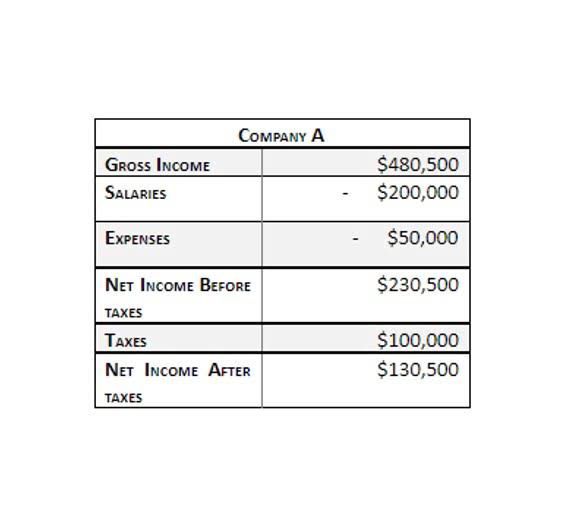
While managing accrued interest requires careful calculation and attention to detail, the use of modern technology and robust accounting practices can streamline the process. As businesses and investors navigate complex financial landscapes, understanding accrued interest remains essential for maintaining accurate records and achieving financial stability. For loans, accrued interest refers to the amount of interest that has accumulated since the last payment. If the bondholder sells it halfway through the payment cycle, they are entitled accrued interest meaning to $25 in accrued interest.
Treasury & Cash Management
But when it comes to things like investments and savings accounts, accrued interest means interest is being earned. While accounting for accrued into two sets of accounts is adjusted – the interest expenses account on the profit and loss statement and the accounts payable on the balance sheet. After three months, the accrued interest totals $12,500, recorded as a liability on the balance sheet. When the semi-annual payment is made, the accrued liability is cleared, and cash is reduced accordingly. This distinction is particularly important for long-term investments and loans, as the timing of interest payments can significantly impact cash flow and tax considerations. Accrued interest arises because most financial products, particularly bonds and loans, accrue interest daily, even if payments are made less frequently—monthly, quarterly, or semiannually.
What Are Accrued Expenses?

Both cases are posted as reversing entries, meaning that they are subsequently reversed on the first day of the following month. Accrued interest is calculated as of the last day of the accounting period. For example, assume interest is payable on the 20th of each month, and the accounting period is the end of each calendar month. The month of April will require an accrual of 10 days of interest, from the 21st to the 30th. Therefore, on March 31st, your company’s accounting team will calculate an Grocery Store Accounting Accrued Expense for the estimated cost of cloud service usage in March.
Treatment in Financial Statements
In financial statements, accrued interest appears under different headings depending on whether it is an asset or a liability. For lenders, accrued interest is recorded as an interest receivable (asset) in the balance sheet. The income statement reflects accrued interest as part of interest income or interest expense, contributing to the overall financial performance of the entity. Accrued interest represents the amount of interest that has accumulated on a loan, bond, or financial instrument but has not yet been paid or received by the lender or investor. It represents a crucial component in accounting, trading, and financial analysis, ensuring accurate records and fair valuation of financial instruments. However, for the lenders, this amount will be referred to as accrued interest revenue earned during the reporting period but not yet received.

In the borrower’s books:

For instance, in the case payroll of a bond, accrued interest ensures that both buyers and sellers receive fair compensation for the time elapsed between coupon payments. Understanding accrued interest helps borrowers plan repayments, investors value bonds correctly, and lenders project income. On the next coupon payment date (December 1), you will receive $25 in interest. The accrued interest for the party who owes the payment is a credit to the accrued liabilities account and a debit to the interest expense account.
- Accrued interest represents the amount you owe but have not yet paid to the lender.
- At the end of each month, the business will need to record interest that it expects to pay out on the following day.
- This distinction also affects the valuation of bonds and loans in secondary markets, influencing buying and selling decisions.
- One common error is miscalculating the time period for which interest has accrued, leading to inaccuracies in financial statements.
Handle accrued interest in investment portfolios

The liability is rolled onto the balance sheet as a short-term liability, while the interest expense is presented on the income statement. The amount of accrued interest for the party who is receiving payment is a credit to the interest revenue account and a debit to the interest receivable account. The receivable is consequently rolled onto the balance sheet and classified as a short-term asset. In accounting, accrued interest refers to the amount of interest that has been incurred, as of a specific date, on a loan or other financial obligation but has not yet been paid out. Accrued interest can either be in the form of accrued interest revenue, for the lender, or accrued interest expense, for the borrower. Although BNPL can offer a flexible way to manage cash flow, missing payments can still hurt your credit score, and some providers charge a high interest rate on longer-term loans.
After almost a decade of experience in public accounting, he created MyAccountingCourse.com to help people learn accounting & finance, pass the CPA exam, and start their career.
But one way to reduce the amount of interest you’re charged is by paying off your balance on time every month. A bond investor holds a bond of a Company XYZ Inc., which is worth $ 100 and pays coupons semi-annually at an interest rate of 12%. The last coupon was made 2 months back, and he wants to sell the bond to the new investor. Therefore, if Adrian wants to buy the bond, he needs to pay Leonard $1,000 plus the interest of the three months. When a borrower repays a loan early, the payoff amount includes not only the remaining principal but also any accrued interest.
- Bondholders get credit for the amount of time they hold a bond, meaning interest accrues between coupon payments on a pro rata basis.
- Due to this accrual basis followed in the accounting process, the company’s financial condition is displayed more transparently.
- For instance, upon receiving office supplies accompanied by a vendor invoice, a company immediately records this invoiced amount as an Accounts Payable liability, reflecting a confirmed debt.
- In financial markets, accrued interest affects the valuation of debt securities such as bonds.
- Missteps can lead to errors in financial reporting, tax filings, and investment evaluations.
- Understanding accrued interest helps borrowers plan repayments, investors value bonds correctly, and lenders project income.
Until the launch of Learnbonds.com in late 2011 there was no single site on the internet catering exclusively to the individual bond investor. The bank’s adjusting entry will debit Accrued Interest Receivable for $50, and will credit Interest Revenue for $50. In the following bullet points, we show how to account for accrued interest by either party, note the need for reversing entries, and point out why an accrual is not needed for immaterial amounts. Modern accounting software simplifies the process of calculating and recording accrued interest.